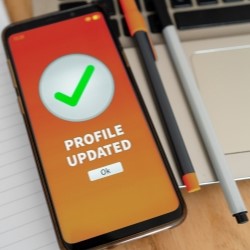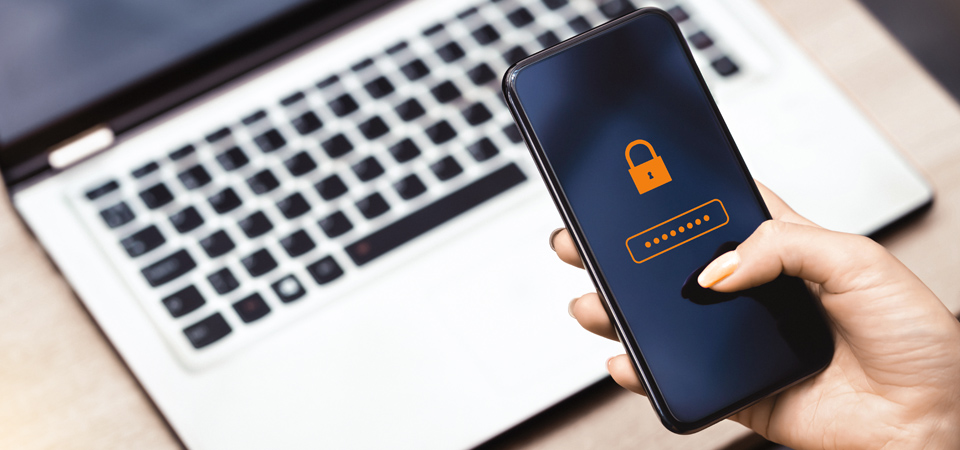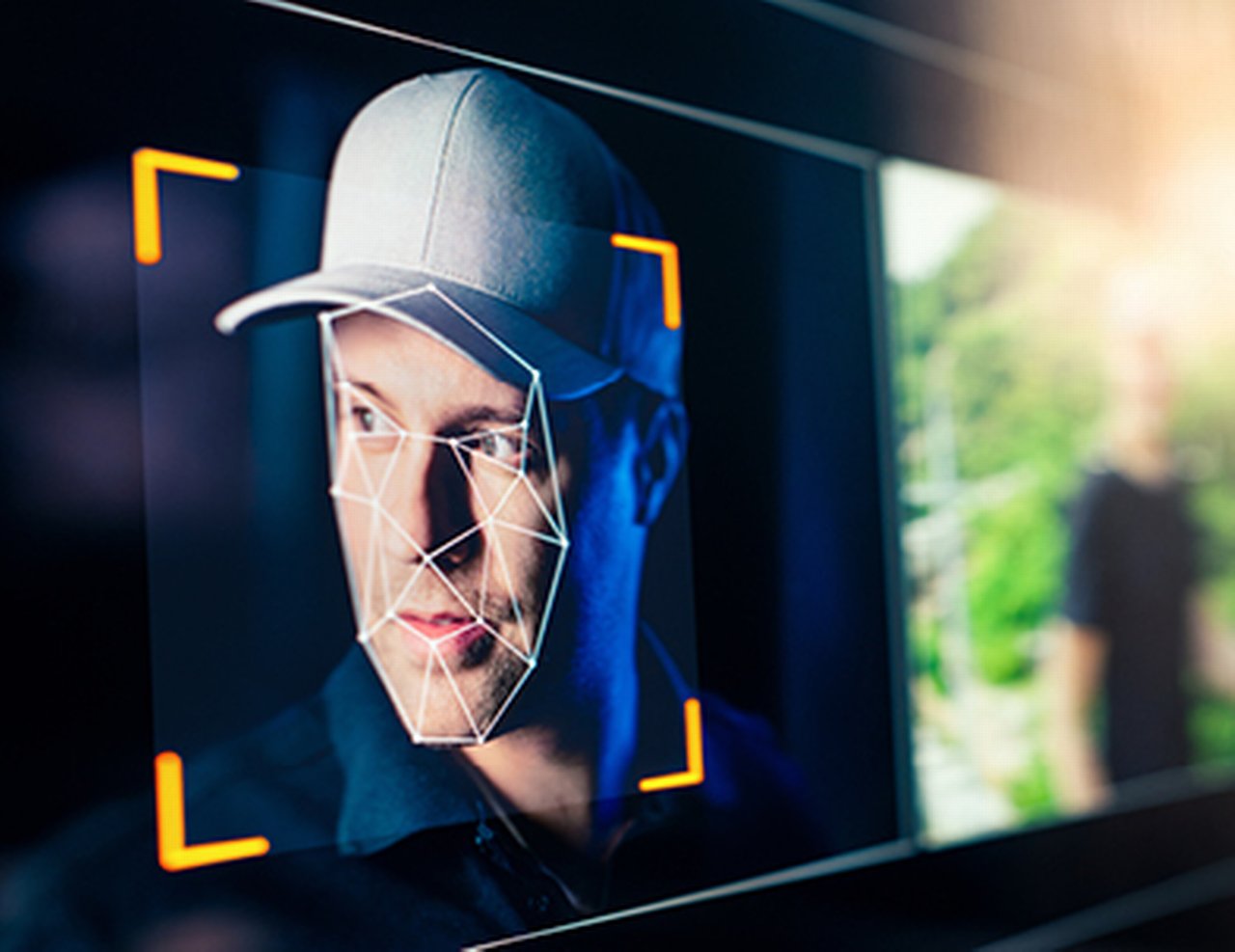Social-Media-Plattformen und Messenger-Dienste bieten viele Vorteile – aber sie stellen auch ein Risiko für Ihre Privatsphäre dar. Unklare Identitäten, mangelnde Kontrolle über Inhalte und gezielte Datenerfassung stellen eine echte Bedrohung dar. Erfahren Sie hier, wie Sie Ihre persönlichen Daten professionell und privat effektiv schützen können.
Wichtigste Punkte

Sichere Kommunikation in sozialen Netzwerken und Messenger-Diensten: Verwenden Sie sichere Passwörter, aktivieren Sie die mehrstufige Authentifizierung und schränken Sie die Sichtbarkeit Ihrer Profile und persönlichen Informationen ein.

Erkennen und vermeiden Sie typische Risiken: Achten Sie auf Phishing-Nachrichten, gefälschte Gewinnspiele, Identitätsdiebstahl und Deepfakes – insbesondere in Direktnachrichten und öffentlichen Kommentaren.

Bewusst posten – privat und professionell: Vermeiden Sie sensible Inhalte, professionelle Details und voreilige Aussagen. Separate private und berufliche Nutzung durchgängig, auch bei Messenger-Diensten.
10 mögliche Gefahren und wie Sie sich schützen können
Soziale Netzwerke gehören für viele Menschen zum Alltag. Doch wo Beiträge, Likes und Netzwerke dominieren, lauern zahlreiche Risiken: für Ihre persönlichen Daten, Ihre Privatsphäre und Ihren digitalen Ruf. Wer sich dieser Gefahren bewusst ist, kann sie durch gezielte Schutzmaßnahmen deutlich reduzieren.
- Phishing und Fake Messages
Kriminelle versenden gefälschte Nachrichten über soziale Medien – oft von gehackten oder replizierten Profilen. Beliebte Beispiele sind angebliche Gewinnspiele, Sicherheitswarnungen oder Angebote mit bösartigen Links. Auch die Zahl der Fake-Job-Angebote als Phishing-Basis steigt stark an. Das Ziel ist in der Regel, persönliche Daten zu erhalten oder Malware zu verbreiten.
So schützen Sie sich: Seien Sie besonders vorsichtig bei unerwarteten oder ungewöhnlich formulierten Nachrichten, auch wenn sie von Freunden zu kommen scheinen. Achten Sie auf Rechtschreibfehler, verdächtige Links und auffällig dringende Formulierungen. Klicken Sie niemals auf Links, ohne nachzudenken. Verwenden Sie außerdem Datenschutzeinstellungen, um Ihre Sichtbarkeit zu begrenzen und so den Angriffsbereich zu reduzieren. - Identitätsdiebstahl
Wer viele Informationen über sich online veröffentlicht, macht es Dritten möglich, ein realistisches Fake-Profil zu erstellen. Kriminelle kopieren Fotos, Namen und persönliche Inhalte, um sich als Sie auszugeben, z. B. um Ihre Kontakte zu täuschen oder gezielte Phishing-Angriffe durchzuführen.
So schützen Sie sich: Veröffentlichen Sie nur so viele personenbezogene Daten wie nötig. Vermeiden Sie insbesondere Kombinationen aus Wohnort, Arbeitgeber, Geburtsdatum und Fotos. Richten Sie beispielsweise eine Google-Benachrichtigung mit Ihrem Namen ein, die automatisch per E-Mail benachrichtigt wird, wenn neue Inhalte über Sie online angezeigt werden. Recherchieren Sie regelmäßig mithilfe von Suchmaschinen, um externe Profile oder Inhalte mit Ihrer Identität zu identifizieren. - Deepfakes und KI-basierte Betrugsversuche
Künstliche Intelligenz ermöglicht es, täuschend echte Bilder, Videos oder Sprachnachrichten zu fälschen. Betrüger nutzen dies zunehmend, um Vertrauen zu gewinnen, etwa durch gefälschte Sprachnachrichten von angeblichen Bekannten oder Prominenten, die um Geld oder persönliche Informationen bitten.
So schützen Sie sich:
Achten Sie auf Inhalte, die „zu real“ erscheinen oder starke Emotionen auslösen. Geben Sie keine vertraulichen Daten weiter, wenn Sie sich nicht absolut sicher sind, ob der Absender authentisch ist. Informieren Sie sich regelmäßig über aktuelle Betrügereien, zum Beispiel durch Meldungen von offiziellen Verbraucherportalen oder Datenschutzbehörden. - Gefälschte Gewinnspiele und betrügerische Influencer-Konten
Kriminelle geben sich als bekannte Marken oder Influencer in den sozialen Medien aus. Sie locken Sie mit Verlosungen oder exklusiven Angeboten, verlangen aber im Gegenzug persönliche Informationen oder leiten Sie zu unsicheren Websites weiter.
So schützen Sie sich: Überprüfen Sie, ob es sich um ein verifiziertes Profil handelt, und stellen Sie die Ernsthaftigkeit des Angebots in Frage. Seriöse Anbieter fordern keine vertraulichen Daten wie Ausweisfotos, Passwörter oder Bankdaten über soziale Netzwerke an. Verzichtet auf die Teilnahme an Gewinnspielen, wenn Herkunft oder Zweck unklar sind.
- Rufschädigung und Cybermobbing
Unachtsame Beiträge, Kommentare oder Fotos können schnell öffentlich geteilt und aus dem Kontext gerissen werden. Dies kann besonders problematisch werden, wenn es gezielte Versuche gibt, eine Person zu entlarven, sei es durch Spott, Diffamierung oder wiederholte Belästigung.
So schützen Sie sich: Vor jeder Veröffentlichung ist zu prüfen, ob der Inhalt auch morgen noch angemessen ist oder ob er in einem anderen Zusammenhang missverstanden werden könnte. Verwenden Sie die Funktionen der Plattform, um ältere Beiträge zu überprüfen, einzuschränken oder zu löschen. Im Falle von Mobbing: Dokumentieren Sie den Inhalt und melden Sie ihn gegebenenfalls oder erwägen Sie rechtliche Schritte. - Unsichere Messenger-Kommunikation
Selbst Messenger mit End-to-End-Verschlüsselung sind nicht automatisch sicher. Malware kann auf Chats tippen, sobald sie auf dem Bildschirm angezeigt werden. Es besteht auch die Gefahr, dass sensible Informationen unbeabsichtigt an Dritte weitergegeben werden, beispielsweise in Gruppenchats oder durch die Weiterleitung von Inhalten.
So schützen Sie sich: Vermeiden Sie es, vertrauliche Daten wie Passwörter, Adressen oder Bankdaten über Messenger-Dienste zu versenden, insbesondere in offenen oder unsicheren Gruppen. Installieren Sie regelmäßig Updates und stellen Sie sicher, dass Sie keine unbekannten Anhänge oder Links öffnen. - Technische Schwachstellen und fehlende Updates
Veraltete Software, ungeschützte Wi-Fi-Verbindungen oder ungeschützte Apps sind häufige Gateways für Angreifer. Die Sicherheit wird oft vernachlässigt, vor allem auf Smartphones, die für viele der zentrale Social-Media-Zugangspunkt sind.
So schützen Sie sich: Halten Sie Ihre Geräte, Apps und Betriebssysteme immer auf dem neuesten Stand. Aktivieren Sie automatische Updates und verwenden Sie Tracking-Blocker sowie seriöse Antiviren-Programme. Dadurch wird die Wahrscheinlichkeit verringert, dass Sicherheitslücken ausgenutzt werden. - Unzureichende Passwortsicherheit
Viele Benutzer verwenden einfache oder identische Passwörter für mehrere Plattformen. Dies erleichtert Angreifern den Zugriff, insbesondere bei sogenannten Credential Stuffing-Angriffen, bei denen gestohlene Zugangsdaten automatisch getestet werden.
So schützen Sie sich: Verwenden Sie für jedes Konto ein starkes, individuelles Passwort mit mindestens zwölf Zeichen und aktivieren Sie nach Möglichkeit die Multi-Factor Authentication (MFA). Ein Passwort-Manager hilft bei der Erstellung und Verwaltung sicherer Passwörter.
- Mangelnde Klarheit der eigenen Daten
Viele Menschen wissen nicht, welche Informationen über sie öffentlich verfügbar sind oder von Plattformen und Dritten gesammelt werden. Dies kann zu unerwünschten Datenlecks, Profilerstellung oder Missbrauch führen.
So schützen Sie sich: Nutzen Sie die Datenschutzfunktionen der Plattformen, um die Sichtbarkeit Ihrer Daten gezielt einzuschränken. Regelmäßige Ausübung Ihrer DSGVO-Rechte: Sie können Auskunft über gespeicherte Daten verlangen, unrichtige Angaben berichtigen lassen oder die Löschung Ihrer Daten verlangen. - Mangelnde Medienkompetenz und Verletzung von Bildrechten
Unbeabsichtigte Datenschutzverletzungen können insbesondere bei Fotos, Videos oder Posts mit anderen Personen auftreten – etwa wenn Sie Inhalte ohne Einwilligung veröffentlichen oder verbreiten.
So schützen Sie sich: Veröffentlichen Sie nur Inhalte, für die Sie die ausdrückliche Zustimmung aller abgebildeten Personen haben. Achten Sie auf Bildrechte, insbesondere bei Gruppenfotos oder im beruflichen Kontext. Überprüfen Sie auch die Herkunft von Inhalten, bevor Sie sie teilen – so vermeiden Sie die unbewusste Verbreitung von Fake News.
Social Media im beruflichen Kontext
Auch im Berufsleben spielen soziale Netzwerke eine immer wichtigere Rolle – sei es zur Eigenwerbung auf Business-Plattformen wie LinkedIn oder im Rahmen der Unternehmenskommunikation. Der korrekte Umgang mit personenbezogenen Daten ist besonders im beruflichen Umfeld von entscheidender Bedeutung:
- Jeder, der öffentlich angibt, wo er arbeitet, welche Projekte er betreut oder welche Position er innehat, kann zum Ziel von Social Engineering oder Identitätsdiebstahl werden. Achten Sie daher besonders darauf, welche Informationen Sie teilen und wer sie sehen kann.
- Inhalte wie Fotos von Unternehmensparteien, Aussagen über Vorgesetzte oder politische Kommentare können – absichtlich oder unabsichtlich – Ihren beruflichen Ruf beeinträchtigen.
- Daher: Trennen Sie professionelle und private Kommunikation klar, überprüfen Sie regelmäßig Ihre Datenschutzeinstellungen und halten Sie sich an alle Social-Media-Richtlinien Ihres Arbeitgebers.
Tipp: Auch auf professionell ausgerichteten Plattformen wie XING oder LinkedIn sollten Sie nicht mehr Informationen als unbedingt notwendig preisgeben – insbesondere dann nicht, wenn Ihr Profil öffentlich zugänglich ist.
Fazit: Mehr Datenschutz in sozialen Medien und Messenger
Soziale Medien und Messenger bieten viele Vorteile, bergen aber auch Risiken für den Datenschutz und die Privatsphäre, die nicht vernachlässigt werden sollten. Wer sich der Gefahren bewusst ist, kann die Sicherheit mit starken Passwörtern, mehrstufiger Authentifizierung, den richtigen Datenschutzeinstellungen und regelmäßigen Updates deutlich erhöhen. Wichtig ist auch, sensible Inhalte sorgfältig zu teilen und private und berufliche Nutzung klar voneinander zu trennen. Mit diesen Maßnahmen können Bedrohungen deutlich reduziert und soziale Netzwerke sicherer genutzt werden.
Häufig gestellte Fragen zum Datenschutz in sozialen Medien und Messenger
Zeige Inhalt von Wer ist für den Schutz meiner Daten in den sozialen Medien verantwortlich?
Die Verantwortung für den Schutz Ihrer Daten in sozialen Medien ist eine gemeinsame Aufgabe. Sie selbst tragen einen großen Teil der Verantwortung, indem Sie bewusst entscheiden, welche Informationen Sie teilen und welche Datenschutzeinstellungen Sie wählen. Gleichzeitig haben Social-Media-Anbieter eine gesetzliche Verpflichtung, Ihre Daten zu schützen und die Bestimmungen der Datenschutz-Grundverordnung (DSGVO) einzuhalten.
Zeige Inhalt von Wer hat Zugang zu meinen persönlichen Daten in sozialen Netzwerken?
Verschiedene Parteien können auf Ihre persönlichen Daten in sozialen Netzwerken zugreifen:
- Andere Benutzer: Abhängig von Ihren Datenschutzeinstellungen können Freunde, Follower oder sogar die Öffentlichkeit Beiträge, Fotos und Profilinformationen sehen.
- Die Plattformbetreiber: Die Unternehmen, die die sozialen Netzwerke betreiben, haben umfassenden Zugriff auf alle Daten, die Sie hochladen oder die durch Ihre Nutzung generiert werden (z. B. Likes, Kommentare, besuchte Seiten).
- Drittanbieter: Wenn Sie Apps, Spiele oder Dienste von Drittanbietern über soziale Medien verwenden, können diese auch auf bestimmte Daten zugreifen, wenn Sie ihnen die Erlaubnis erteilen.
- Werbetreibende: Sie haben in der Regel keinen direkten Zugriff auf Ihre Rohdaten. Die Plattformen nutzen Ihre Daten jedoch, um zielgerichtete Werbung auf der Grundlage von Interessen und Verhalten anzuzeigen.
- Behörden: Unter bestimmten rechtlichen Bedingungen (z. B. mit gerichtlicher Anordnung während der Ermittlungen) können Behörden die Freigabe von Nutzerdaten von den Plattformbetreibern verlangen.
Zeige Inhalt von Was genau sind „personenbezogene Daten“ im Kontext sozialer Medien?
Personenbezogene Daten sind alle Informationen, die Sie als identifizierte oder identifizierbare Person betreffen. Im Kontext von Social Media umfasst dies:
- Identifikationsdaten: Name, Geburtsdatum, E-Mail-Adresse, Telefonnummer, Benutzername und Profilbild
- Kommunikationsdaten: private Nachrichten, Kommentare, Beiträge, Likes und Freigaben
- Kontaktdaten: Freundeslisten und Follower
- Standortdaten: GPS-Daten, wenn Sie Ihren Standort teilen oder standortbasierte Dienste nutzen
- Biometrische Daten: Fotos und Videos, mit denen Gesichter erkannt werden können
- Nutzungsverhalten: welche Inhalte Sie anzeigen, wie lange Sie online sind und auf welche Anzeigen Sie klicken.
Zeige Inhalt von Welches sind die größten Datenschutzrisiken bei der Nutzung sozialer Medien?
Die Nutzung sozialer Medien birgt verschiedene Datenschutzrisiken:
- Datenlecks und Hackerangriffe: Persönliche Daten können gestohlen und durch Cyberangriffe auf Plattformen veröffentlicht werden.
- Identitätsdiebstahl: Kriminelle könnten Informationen aus Ihrem Profil verwenden, um eine falsche Identität anzunehmen.
- Gezielte Werbung und Profiling: Ihre Daten werden verwendet, um detaillierte Profile über Sie zu erstellen, die zu hochgradig personalisierter Werbung führen können.
- Cybermobbing und Stalking: Zu viele persönliche Daten können von böswilligen Personen für Belästigungen oder Stalking missbraucht werden.
- Phishing und Social Engineering: Kriminelle nutzen Ihre Informationen, um überzeugende Phishing-E-Mails oder -Nachrichten zu erstellen, die Sie zur Offenlegung vertraulicher Daten verleiten.
- Verbreitung von Malware: Ihr Gerät kann über bösartige Links in Beiträgen oder Nachrichten mit Viren oder anderer Malware infiziert werden.
- Rufschädigung: Unüberlegte Posts oder peinliche Inhalte können Ihrem Ruf langfristig schaden.
Zeige Inhalt von Was sagt die DSGVO (Datenschutz-Grundverordnung) über soziale Medien und Datenschutz aus?
Die DSGVO stärkt Ihre Rechte als Nutzer und legt klare Verpflichtungen für Social Media Plattformen fest. Unter anderem gibt es das Recht auf:
- Information: Sie haben das Recht zu erfahren, welche Daten über Sie gesammelt werden und wofür sie verwendet werden.
- Zugriff: Sie können eine Kopie Ihrer gespeicherten Daten anfordern.
- Berichtigung: Sie können die Berichtigung falscher Daten beantragen.
- Löschung („Recht auf Vergessenwerden“): Sie können die Löschung Ihrer Daten verlangen, wenn diese nicht mehr benötigt wird oder Sie Ihre Einwilligung widerrufen.
- Datenübertragbarkeit: Sie haben das Recht, Ihre Daten in einem gemeinsamen Format zu erhalten, um sie an einen anderen Anbieter zu übertragen.
- Widerspruch: Sie können der Verarbeitung Ihrer Daten, insbesondere im Direktmarketing, widersprechen.
Die Plattformen müssen die Grundsätze des Datenschutzes einhalten, technische und organisatorische Maßnahmen zum Schutz der Daten umsetzen und transparent mit Ihren Daten umgehen.
Zeige Inhalt von Wann ist die Übermittlung meiner Daten an Dritte in den sozialen Medien erlaubt?
Die Weitergabe Ihrer Daten an Dritte über soziale Medien ist nur unter bestimmten Voraussetzungen gestattet:
- Mit Ihrer ausdrücklichen Zustimmung: Dies ist der häufigste Grund. Wenn Sie einer App oder einem Dienst Zugriff auf Ihre Daten gewähren, geben Sie Ihre Einwilligung.
- Wenn es für die Erfüllung eines Vertrags erforderlich ist: Wenn die Nutzung eines Dienstes die Übermittlung Ihrer Daten erfordert.
- Aufgrund einer gesetzlichen Verpflichtung: Wenn die Plattform gesetzlich verpflichtet ist, Daten an Behörden weiterzugeben.
- Aufgrund berechtigter Interessen: Wenn das Unternehmen ein berechtigtes Interesse an der Datenverarbeitung hat und Ihre Interessen oder Grundrechte nicht überwiegen.
Zeige Inhalt von Warum sollte ich vorsichtig sein, wenn ich soziale Medien nutze, auch wenn ich nichts zu verbergen habe?
Die Annahme „Ich habe nichts zu verbergen“ ist irreführend:
- Unvorhersehbare zukünftige Verwendung: Daten, die heute harmlos erscheinen, könnten in Zukunft in einem anderen Kontext problematisch werden oder gegen Sie verwendet werden.
- Falsche Interpretation von Daten: Algorithmen können Ihre Daten falsch interpretieren oder falsche Schlüsse über Sie ziehen.
- Ziel für Kriminelle: Selbst scheinbar unwichtige Informationen können von Cyberkriminellen verwendet werden, um ein vollständigeres Bild von Ihnen zu erstellen und gezieltere Angriffe (z. B. Phishing oder Social Engineering) zu starten.
- Kontrolle über Ihre Identität: Es geht nicht nur darum, was Sie verstecken möchten, sondern darum, was Sie teilen möchten und wie Ihre digitale Identität wahrgenommen wird.
- Verkauf und Weitergabe an Dritte: Ihre Daten können ohne Ihr Wissen an unzählige Dritte weitergegeben und für Zwecke verwendet werden, die Sie nie beabsichtigt haben.
- Beeinflussung und Manipulation: Die Erhebung von Daten ermöglicht es, Sie durch personalisierte Inhalte und Werbung gezielt zu beeinflussen.
Zeige Inhalt von Wie erkenne ich, ob ein Link oder eine Nachricht in sozialen Netzwerken schädlich sein könnte?
Seien Sie wachsam und achten Sie auf folgende Anzeichen:
- Unerwartete oder ungewöhnliche Nachrichten: Seien Sie misstrauisch gegenüber Nachrichten von unbekannten Absendern oder von Freunden, die ungewöhnlich formuliert sind oder sehr dringend erscheinen.
- Rechtschreib- und Grammatikfehler: Ernsthafte Absender machen selten offensichtliche Fehler.
- Verlockende Angebote oder Drohungen: Unrealistische Gewinne, kostenlose Angebote oder dringende Warnungen sind oft betrügerisch.
- Verkürzte URLs: Bewegen Sie die Maus über den Link (nicht klicken!), um die vollständige URL in der Statusleiste Ihres Browsers anzuzeigen. Wenn die Ziel-URL nicht Ihren Erwartungen entspricht, ist Vorsicht geboten.
- Fehlende HTTPS-Verschlüsselung: Wenn Sie zu einer Website weitergeleitet werden, überprüfen Sie, ob die URL mit „https://“ beginnt und ein Schlosssymbol in der Adressleiste sichtbar ist.
- Ungewöhnliche Login-Felder: Geben Sie Ihre Login-Daten nur auf den offiziellen Login-Seiten der Plattformen ein (überprüfen Sie die URL sorgfältig!).
- Dateidownloads ohne Kontext: Seien Sie vorsichtig mit Anforderungen zum Herunterladen von Dateien, die Sie nicht erwartet haben.
Zeige Inhalt von Wie erkenne ich Fake News?
Um Fake News zu identifizieren, seien Sie kritisch und achten Sie auf Folgendes:
- Sprache & Emotionen: Alarmierende, übertriebene oder rein emotionale Formulierungen sind Warnsignale.
- Bilder überprüfen: Verwenden Sie die umgekehrte Bildsuche (z. B. Google Images), um zu sehen, ob Fotos aus dem Kontext genommen oder manipuliert wurden.
- Quellen überprüfen: Wer steckt hinter der Nachricht? Ist die Quelle seriös und vertrauenswürdig? Werden Fakten belegt?
- Skepsis bei Unsicherheiten: Wenn etwas „zu gut“ oder „zu schockierend“ klingt, ist Misstrauen angebracht. Seien Sie besonders vorsichtig mit Deepfakes, die täuschend echt erscheinen können.
Bleiben Sie wachsam!
Zeige Inhalt von Warum ist der Datenschutz in den sozialen Medien so wichtig?
Datenschutz in sozialen Medien und Messenger ist aus mehreren Gründen von entscheidender Bedeutung:
- Schutz der Privatsphäre: Sie können selbst entscheiden, wer welche Informationen über Sie erhält und Sie behalten die Kontrolle über die Verwendung Ihrer Daten.
- Schutz vor Missbrauch: Ihre Daten können für Identitätsdiebstahl, Betrug oder unerwünschte Kontakte missbraucht werden.
- Prävention von Diskriminierung: Datenprofile können zu Diskriminierung führen, beispielsweise bei Bewerbungen oder Bonitätsbeurteilungen.
- Schutz vor Manipulation: Durch die Analyse Ihrer Daten können Social-Media-Plattformen gezielt Inhalte und Werbung anzeigen, die Ihre Meinung beeinflussen sollen.
Zeige Inhalt von Wann sollte ich meine Datenschutzeinstellungen in sozialen Medien und in Messenger überprüfen?
Social-Media-Accounts und Messenger-Dienste verändern sich ständig – durch Updates, neue Funktionen oder persönliche Veränderungen. Um zu verhindern, dass Ihre persönlichen Daten unbeabsichtigt sichtbar werden, sollten Sie die Datenschutzeinstellungen in regelmäßigen Abständen überprüfen. Die folgenden Situationen sollten dazu aufgefordert werden.
- Nach jedem Software-Update: Updates können neue Funktionen oder Standardeinstellungen einführen, die sich auf Ihre Privatsphäre auswirken.
- Bei der Einführung neuer Funktionen: Wenn eine Plattform neue Sharing-Optionen oder Dienste anbietet, ist es am besten, die zugehörigen Datenschutzeinstellungen sofort zu überprüfen.
- Mindestens einmal im Quartal oder alle sechs Monate: Eine Routinekontrolle hilft, den Überblick zu behalten.
- Nach dem Beitritt zu neuen Gruppen oder der Installation neuer Apps: Diese erfordern möglicherweise zusätzliche Berechtigungen.
- Wenn sich Ihre persönliche Situation ändert: Zum Beispiel bei einem neuen Job oder Umzug, was die gewünschte Sichtbarkeit Ihrer Informationen beeinträchtigen könnte.



